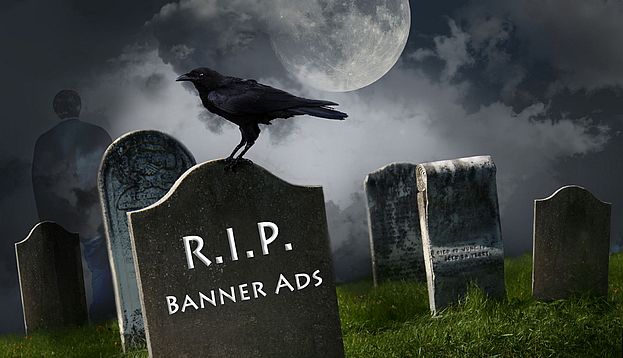Banner ads have been in advertising for a great period of time now, but there’s a question revolving around whether they remain as effective as other means of native advertising. This past week, that argument arose once more, as Farhad Manjoo published a story titled Fall of the Banner Ad: The Monster that Swallowed the Web, which appeared on the front page of the New York Times.
In that story, Manjoo explained how banner ads were preventing certain economics revolving around online content, with Andreessen Horowitz’ Chris Dixon adding, “It’s almost like a prank that was played by the technology industry on the media industry 20 years ago.”
The story, posted by Pando, went back and forth, with IAB president and CEO Randall Rothenberg responding to Manjoo’s accusations. “Banner ads are the Mark Twain of the Internet: reports of their death are greatly exaggerated,” he explained. “Farhad Manjoo has built a lengthy piece on a ridiculous premise.”
With that, the lines are still divided over the usefulness of banner advertising, especially considering the other means available. Sharethrough CEO Dan Greenberg had his own thoughts on the matter, speaking with Pando and explaining that advertising revenue could be greatly generated with a larger audience – and banner ads actually got in the way of that, even being irrelevant to a fault. “It created a shell game, circling ads on top of ads on top of ads,” he said.
One example Greenberg brought up was the Suggest.com page, which consists of click-through countdown articles, like “8 Starlets Rejected From Playboy.” The site is filled with a number of banner ads, including a noticeable one for Braintree.
“I was on the Braintree website earlier in the day. They don’t care where I am on the Internet. They’re just trying to remind me they’re there,” said Greenberg. “Banner ads forced the New York Times and Suggest.com onto an even playing field. But they also made it worse. Because it’s cheaper for Braintree to reach me on Suggest.com than it is the New York Times.”
Meanwhile, native advertising remains on the rise, such as the Red Bull-sponsored clip that featured Felix Baumgartner free-falling a whopping 128,000 feet from space. It’s a clip that garnered hundreds of millions of views, leaving viewers awestruck at its tranquility.
“If I said to you, watch this clip of an eagle flying with a camera strapped to its head, or watch this video of an eagle flying with a GoPro attached to its head, you’re more likely to watch the GoPro clip, because they’ve built up a reputation of making great stuff,” explained Greenberg.
The argument over the banner ad is likely to continue for some time, but, for the time being, it seems more and more companies are accepting mainstream advertising to move their companies forward.
